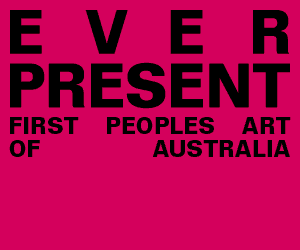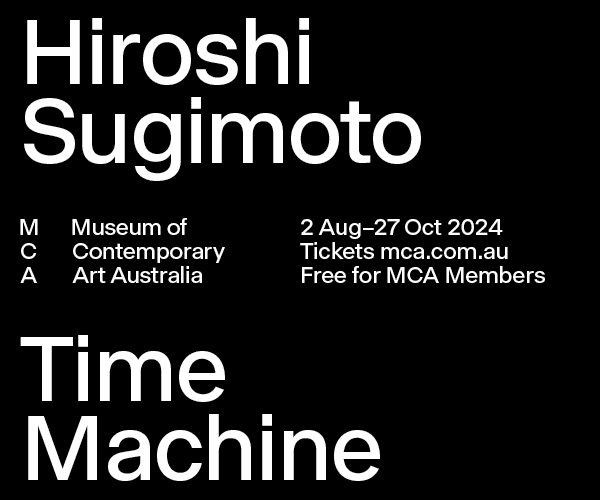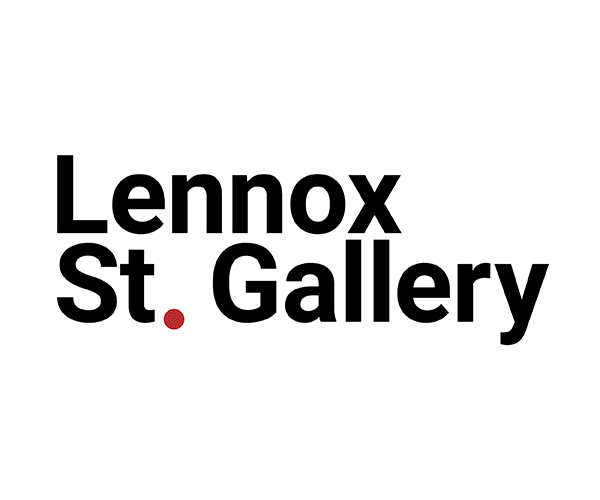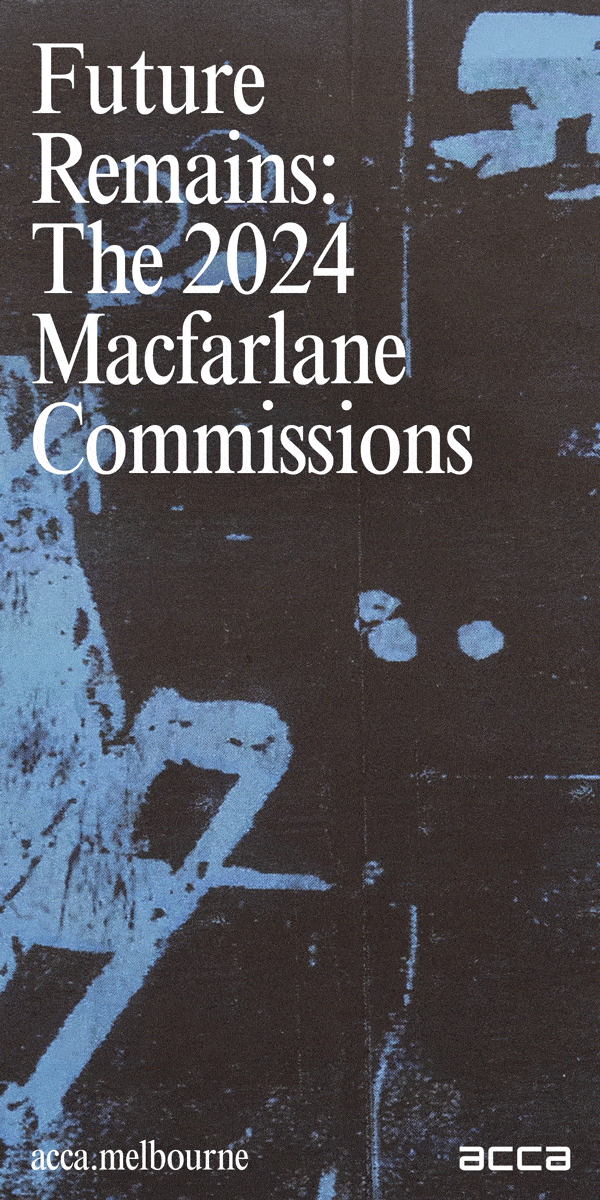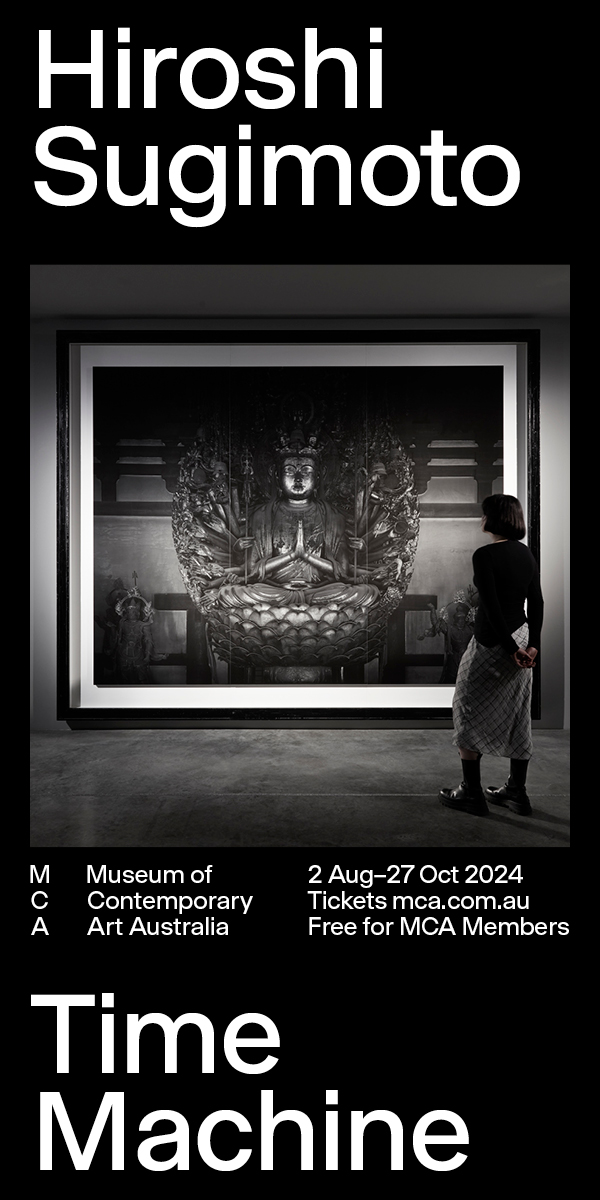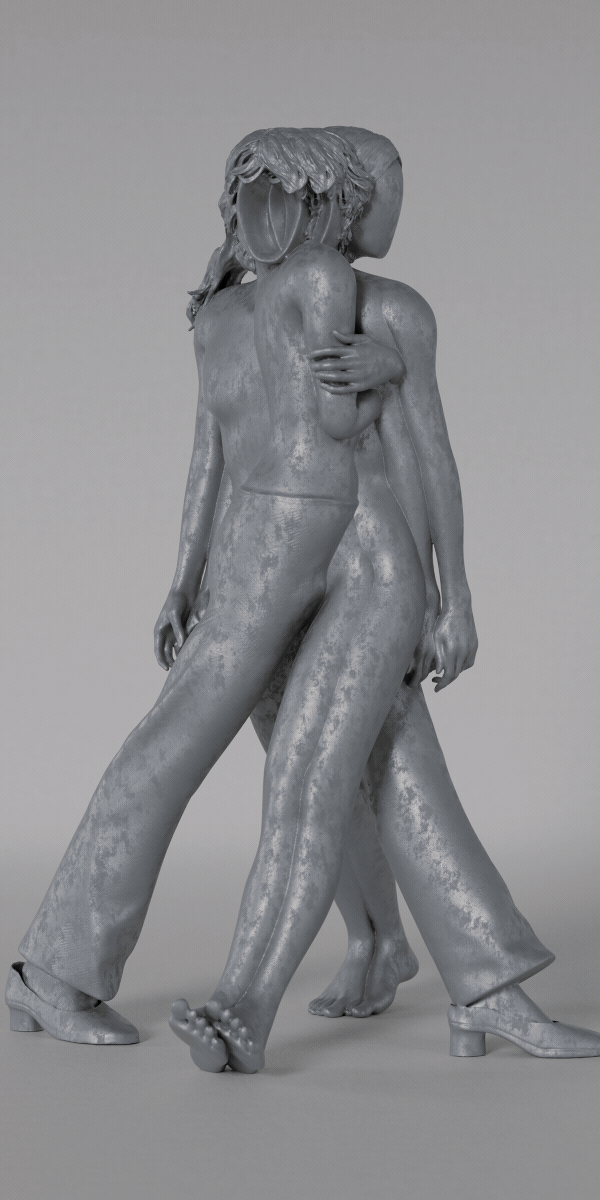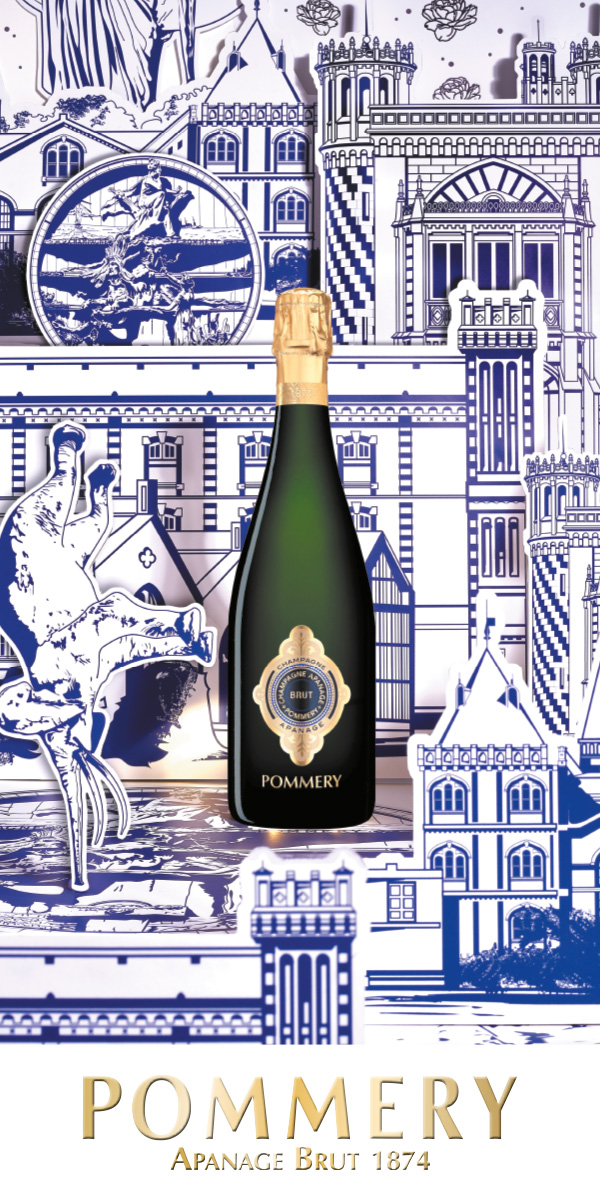Timo Hogan
Timo Hogan’s depictions of his Country are profound, painterly stories told through colour and texture, demonstrating an intimate knowledge of place and its history.

Image credit: Timo Hogan, Installation view Timo Hogan, 2022 Northern Centre for Contemporary Art, Darwin. Presented by Salon Art Projects in Association with Spinifex Arts Project. Photo: Fiona Morrison. Courtesy Salon Art Projects
Spinifex artist Timo Hogan, bearded and wearing a collared shirt flecked in orange and blue, is seated in the Art Gallery of South Australia in Adelaide. He wants to tell a big story about a powerful water serpent, just enough for his audience to understand that there is a vast creation history and moral framework in his paintings.
Hogan, who turns 50 in 2023, is young for a desert painter. He lives in the remote community of Tjuntjuntjara in Western Australia. He raises his microphone to speak, mostly in Pitjantjatjara, explaining the huge canvas behind him, which depicts the vast saltwater expanse of Lake Baker on the northwest edge of the Great Victoria Desert. He has just recently become the cultural holder of his Country, after his father.
“This painting here is the Tjukurpa [creation story] of the Wanampi [watersnake] and the Wati Kutjara [two men],” he tells the audience at Tarnanthi Festival in 2021, just a month after winning the Telstra Art Award, the main prize in the annual National Aboriginal and Torres Strait Islander Art Awards.
His rhythmic locutions loop like concentric circles, befitting this Tjukurpa which is simultaneously about the past, present and future. “These two men were sitting and watching, they were watching the rockhole,” he says.
“They were watching it for a long time, with the Wanampi inside, and so the Wanampi come outside the rockhole, and was lying next to the rock hole, and the two men were watching the Wanampi straight down, watching it lie there for a long time …
“The two men went down below, straight down to the rockhole. Down at the rockhole, the two men saw the Wanampi sleeping up close and said we should kill it, and then they speared it, they speared him, you know, stabbed him. There’re marks on the ground from where they speared him, all over.
“He was in pain and moving slowly, moving very, very slowly across the land. He made a little lake, yeah, a little lake, and he went into the little lake. He went in the lake and cut through the lake and made the lake … He went to the other side … came back and went into the rock hole and was sick, and that’s how he made a salty rock hole.
“And he was blind, he can smell through his nose. This Wanampi, he made lake. Big one. Really big one. Yes, big story.”
Upon approaching Lake Baker, Hogan will yell out to the Wanampi: “Hey, it’s me. I’m family. I come to visit.” He will take some sand from the lake and rub it on his body, to let the Wanampi smell him.
“This is a dangerous place,” he elaborates in the Tarnanthi catalogue. “A watiku place – men only. Women can’t go there. And when you come there and you’re getting close that cold wind starts coming around. You can feel him, that Wanampi, that watersnake man, he knows you’re there. And that wind starts getting really cold so you’re shivering.”
Matt Ward, co-founder of Darwin’s Salon Art Projects and director of Outstation Gallery, says Hogan stands out because of the “sparseness” of his canvases, which are also “layered in the way he applies the paint to the salt lakes, to get this textural, blended field of white.” Generally, Hogan draws the edge of the salt lakes first on his canvases, usually in chalk. He then uses a pallet knife to spatula down the paint, leaving a thick layer of white, often with subtle colour variances from touches of blue or purple.
As Ian Plunkett, co-director of Japingka Aboriginal Art in Fremantle, says: “His beautiful paintings are spare in style, but actually full of unseen content, knowledge and emotion.”
Among Hogan’s collectors is American actor Steve Martin, who bought a painting from Hogan’s first solo show, Pantjutjara, at Outstation Gallery in August 2021. The work was purchased on his behalf by Australian fine art dealer D’Lan Davidson. Martin thinks of Hogan as “very contemporary,” as reflected in the artist’s relative youth for a traditional Indigenous Australian artist.
Hogan was born in Kalgoorlie, Western Australia in 1973, his mother having been driven to a hospital there two hours by car from where she lived at Cundeelee Mission. Earlier, she and other family members were among those forced off their lands by the British atomic testing at Maralinga, which took place in secret between 1956 and 1963 with next to no regard for local Indigenous people’s safety.
Hogan spent much of his childhood with his father, Neville, and stepmother at Mount Margaret, and later at Warburton. His father would take him to Lake Baker, teaching him “everything,” including how to use spears. But Hogan’s last visit to Lake Baker as a child was around the age of 12, and he wouldn’t see it again until he was middle-aged.
Hogan tells VAULT by phone from his remote community that he painted his first canvas in 2004, while living at Kalka in the Aṉangu Pitjantjara Yankunytjatjara (APY) Lands. At the time, arts workers Amanda Dent and Brian Hallett were developing Ninuku Arts, handing out paint and canvas to residents from the back of a Toyota, roughly 400 kilometres north of his current home at Tjuntjuntjara.
Hogan moved communities and didn’t paint again until 2015, when Dent and Hallett came to Tjuntjuntjara to run Spinifex Arts Project. Before he became a full-time artist, Hogan was a bus driver for the arts centre. “Old people, I picked them up, old ladies, helping the old people,” he says in English.
Switching to Pitjantjatjara, translated by Dent, he speaks of coming to the arts centre daily now to paint the Wanampi (watersnake) and the Wati Kutjara (two men), and of journeys along the very rough road from Tjuntjuntjara to Lake Baker. The trip takes a day and a half, including camping halfway. After a 35-year absence from Lake Baker, Hogan drove there once again with Hallett.
In a 2021 essay, Hallett spoke of their hope of taking Hogan’s father, then living in aged care, back to Lake Baker, but he was too ailing. Camping by a fire in a chilling wind just prior to reaching their destination, Hogan “began to talk forcefully and anxiously in language into the dark moonless night,” Hallett recalled. “Without looking I knew he was sitting up in his swag … talking to beings that inhabit Lake Baker, to those that were part of the creation, who shaped the lake and made the surrounding landscape and who, as Timo sees, still reside there.”
The next day, they pulled up at Lake Baker, the artist “full of awe and smiling … walking on air as he moved swiftly to the edge and looked out … The knowledge and ownership seemed complete … he looked at me and said, ‘Lake Baker. I’m the boss now’.”
The last time Hogan went to Lake Baker, the artist tells VAULT, he travelled with photographer Stephen Oxenbury, who dropped his video camera into the lake. “I had to talk to that Wanampi and tell him to give the camera back,” says Hogan. Oxenbury took his camera apart and dried it in the sun, still managing to produce a film of their journey.
Back on the road, Oxenbury got out to take a photo, fell and twisted his ankle. “We could feel the wind,” says Hogan. “It was that Wanampi.”
Timo Hogan is showing at Salon Art Projects, Adelaide October 20–29, 2023; at Light Square Gallery on the TAFE SA campus as part of Tarnanthi Festival; and as part of the NGV Triennial 2023, from December 3, 2023, until April 7, 2024.
Timo Hogan shows with Spinifex Arts Project, Tjuntjuntjara, Western Australia; at the Arts Centre, Salon Art Projects, Darwin; and at Japingka Aboriginal Art, Fremantle.
spinifex.org.au/spinifex-arts
outstation.com.au
salonartprojects.com.au
japingkaaboriginalart.com
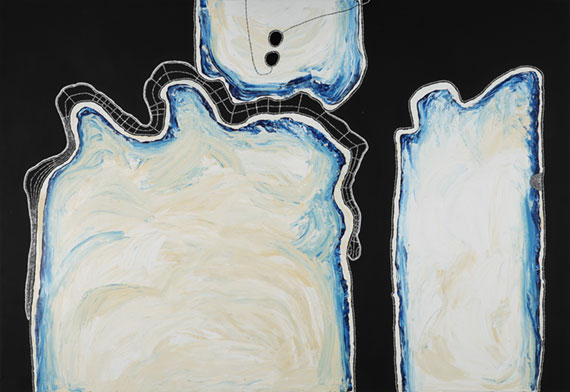
Image credit: Timo Hogan, Lake Baker, 2022 acrylic on linen 290 x 200 cm. Photo: Fiona Morrison. Courtesy Salon Art Projects

Image credit: Timo Hogan, Installation view Timo Hogan, 2022 Northern Centre for Contemporary Art, Darwin. Presented by Salon Art Projects in Association with Spinifex Arts Project. Photo: Fiona Morrison. Courtesy Salon Art Projects
This article was originally published in VAULT Magazine Issue 42 (May – Jul).
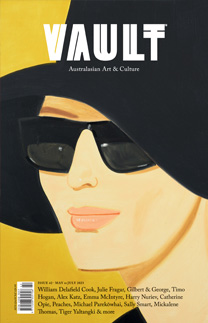
Click here to Subscribe





